Since the original Jurassic Park (1993), the world has been captivated by the mighty dinosaurs brought to life on the big screen. The Jurassic World series (2015 onward) introduced even more new dinosaur species, with breathtaking special effects that left many wondering: which dinosaurs really existed, and what were they actually like? Here’s a comprehensive guide to 18 iconic dinosaurs from Jurassic World, including their names, movie roles, and scientific background.
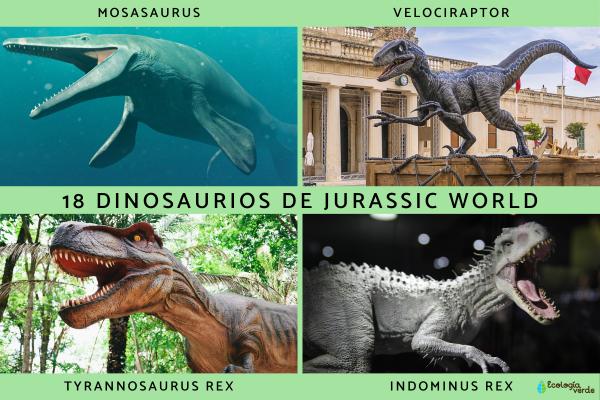
Stegosaurus
Baryonyx walkeri
Triceratops
Dimorphodon
Mosasaurus
Velociraptor
Edmontosaurus
Tyrannosaurus rex
Gallimimus bullatus
Indominus rex (fictional)
Other Notable Dinosaurs: Metriacanthosaurus, Parasaurolophus, Pteranodon, Suchomimus, Microceratus, Ankylosaurus, Pachycephalosaurus, Apatosaurus
Stegosaurus was a large, four-legged herbivore with two rows of distinctive bony plates along its arched back and spiked tail. The plates may have helped regulate body temperature and served as defense against predators. It fed on low-lying plants and is one of the most recognizable dinosaurs in the Jurassic World franchise.
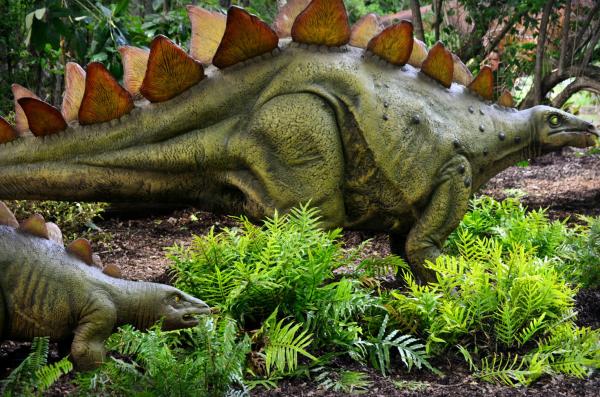
Baryonyx was a formidable predator, walking on two powerful hind legs, with shorter front limbs and a long tail for balance. It could reach up to 10 meters in length and mainly ate fish, using its long, crocodile-like jaws filled with sharp teeth. It also scavenged, and likely lived near rivers or lakes.
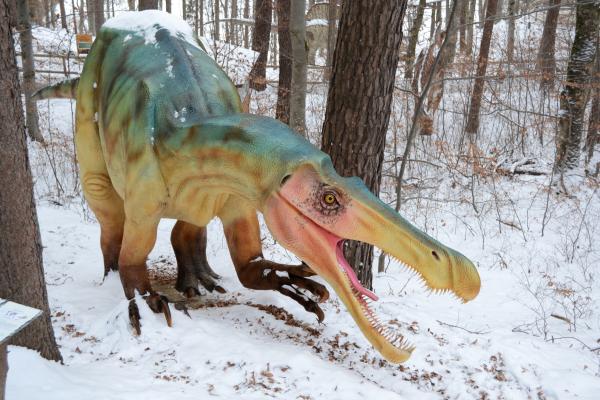
A Jurassic World favorite, Triceratops was a massive herbivore known for its large bony frill at the back of the head and three facial horns (two above the eyes, one on the snout). These features were likely used for defense and social display. It weighed up to 9 tons and coexisted with predators like T. rex.
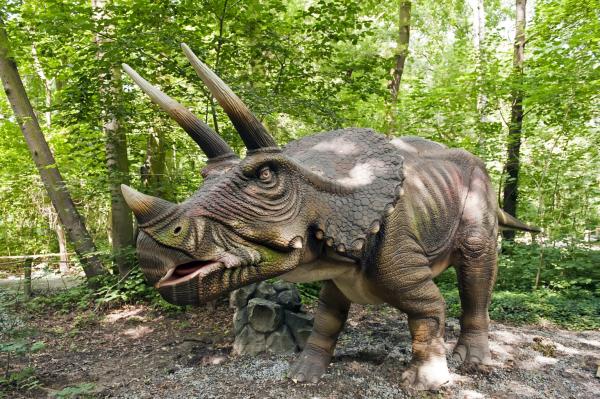
Although not a dinosaur but a pterosaur, Dimorphodon coexisted with dinosaurs and was featured in the movies. It had a 1.5-meter wingspan, walked on two legs when not flying, and had two types of teeth for eating insects and small vertebrates. Its body was covered in hair-like filaments, not feathers.
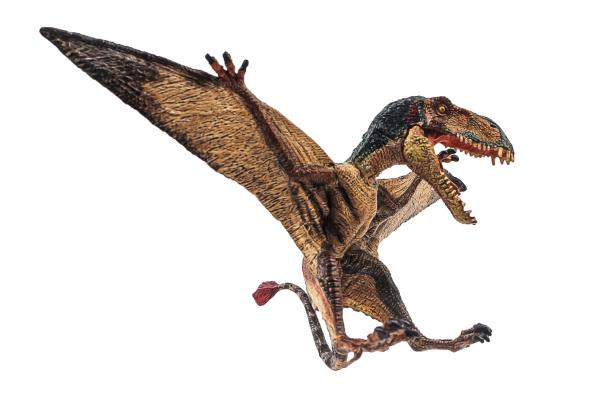
Mosasaurus was an enormous marine reptile (not a true dinosaur), growing up to 18 meters long. With its paddle-like limbs, it dominated Cretaceous seas, hunting turtles, fish, and other marine creatures. It often stayed near the surface and is one of the most dramatic predators in the film series.
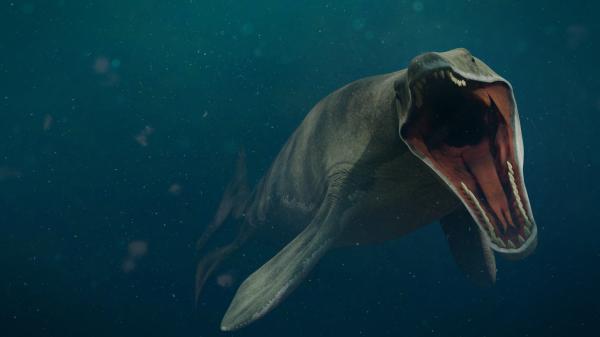
Velociraptors are central to the Jurassic World narrative. However, the movie’s raptors are much larger and smarter than real-life Velociraptors, which were turkey-sized and likely covered in feathers. The film’s design is actually closer to Deinonychus, but the name “Velociraptor” was used for dramatic effect.
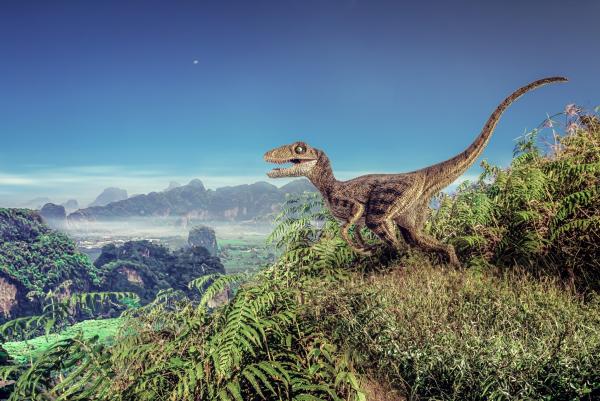
One of the last surviving dinosaurs, Edmontosaurus was a giant “duck-billed” herbivore reaching up to 14 meters in length, with a skull over 1 meter long. It mainly ate conifers and could walk on all fours or rear up on two legs for speed.
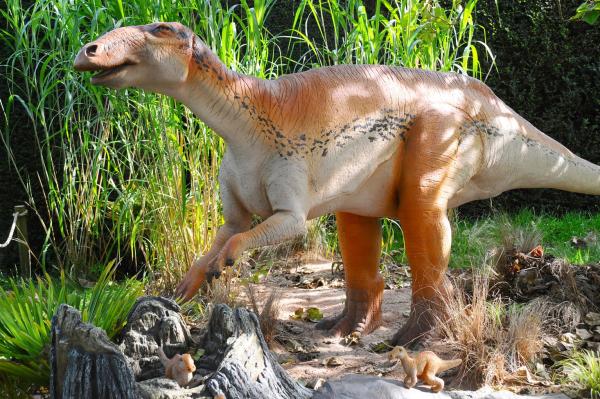
The most iconic carnivorous dinosaur, T. rex stood 6 meters tall and stretched 13 meters long. Its short but powerful arms and massive jaws—lined with 20-centimeter teeth—made it a formidable predator and scavenger. Recent research suggests T. rex may have had a covering of primitive feathers.

The name means “chicken mimic,” and Gallimimus resembled an ostrich with a long neck, beak, and powerful hind legs for running. It used its long tail for balance and was omnivorous, feeding on plants and insects.

Indominus rex is a genetically engineered hybrid created for the Jurassic World storyline. This fictional dinosaur combines genes from T. rex, Carnotaurus, Velociraptor, and even modern animals like frogs and snakes, giving it camouflage and heightened intelligence. Indominus serves as a cautionary metaphor about genetic engineering and humanity’s interference with nature.
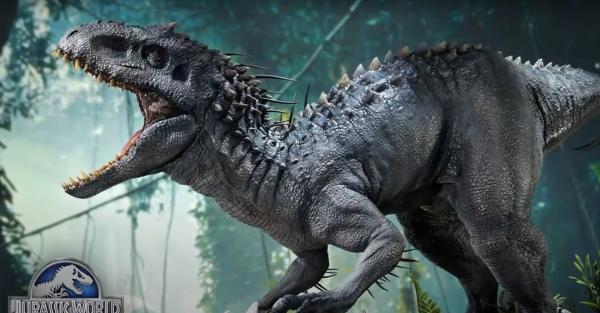
Metriacanthosaurus: A medium-sized theropod carnivore.
Parasaurolophus: A herbivore with a distinctive cranial crest (“duck-billed dinosaur”).
Pteranodon: A large, toothless pterosaur with a wingspan up to 7 meters.
Suchomimus: A spinosaurid with a long snout and a sail-like back.
Microceratus: A small ceratopsian herbivore.
Ankylosaurus: Famous for its bony armor and clubbed tail, a defensive specialist.
Pachycephalosaurus: Known for its thick, domed skull—possibly used for headbutting.
Apatosaurus: A gigantic, long-necked herbivore, reaching up to 20 meters.

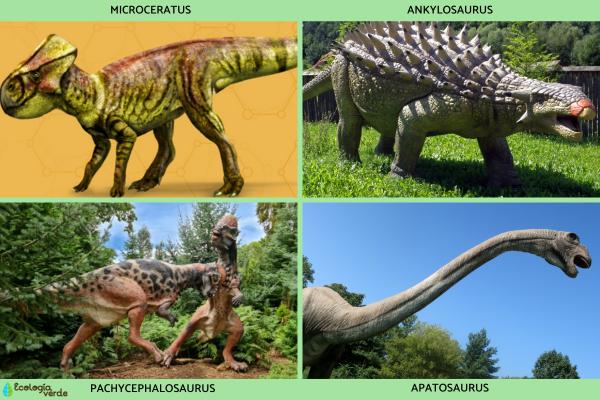
While many of the movie’s dinosaurs are based on real fossil discoveries, filmmakers often altered size, intelligence, or appearance for dramatic effect. For example, the movie Velociraptor is based more on Deinonychus; some marine reptiles and pterosaurs featured (like Mosasaurus or Pteranodon) are not true dinosaurs, but related ancient reptiles.
Jurassic World brings dinosaurs and prehistoric creatures to life with stunning visuals and creative storytelling. Exploring the real history behind these cinematic stars can inspire a greater appreciation for paleontology and the mysteries of Earth’s past. Want to learn more about dinosaur species, facts, and discoveries? Stay tuned to our dinosaur encyclopedia!
animal tags: Dinosaur species
We created this article in conjunction with AI technology, then made sure it was fact-checked and edited by a Animals Top editor.